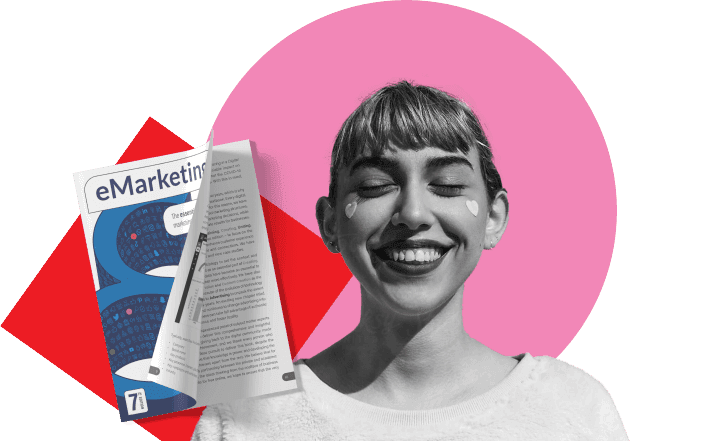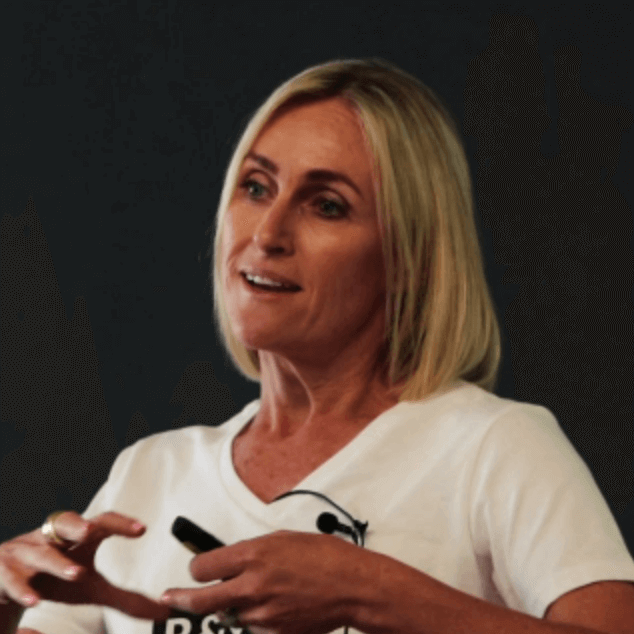Online learning from an accredited institution
National Certificate in Design Techniques – User-Centered Design
Learn how to design products, services, experiences, and processes that focus on satisfying and solving user needs and challenges – turning them into loyal fans. Discover the design-driven principles that power the most innovative companies and entrepreneurial minds in the world today. In this SETA-accredited, 12-month program you’ll also develop a deep understanding of human behavior and master powerful new complex-problem solving techniques.
“Thank you Team Red & Yellow for the knowledge. It’s only been a few months and I can see a difference in the way I think regarding advertising and marketing in the digital realm.”
Nadine Botes
Ogilvy – Senior Creative Specialist in Retail Marketing and Advertising
Master the unique combination of UX and conceptual thinking.
User-centered design (UCD) is an iterative design methodology that focuses on satisfying the needs and challenges of users and consumers. Being user-centric means placing the user at the center of all product, service, experience, and process decisions. The best businesses in the world today are fiercely user-centric.
The modern business environment is fast-changing and competitive, where complex challenges are constantly being thrown at business leaders and their workforce. To survive this onslaught of change and competition, the modern organization needs to be innovative and adaptable. But how can the business achieve innovation and adaptability?
Traditional management approaches were developed in stable business environments and have been shown to be outdated and ineffective in today’s environment. In response, industry leaders worldwide are turning to user-centered design and Design Thinking as effective ways to generate creativity and flexibility in the organization – and to design innovative solutions that are centered around the needs of the people that use the product or service, as well as the needs and capabilities of the business.
What you’ll learn
At the end of this program, graduates will be able to:
- Apply user-centered design and design thinking approaches to solve complex problems.
- Conduct various user research methods to empathize with the users of a product or service.
- Analyse and synthesize user research through Design Thinking tools such as affinity mapping, personas, and user journey maps.
- Define the design challenge to be solved.
- Plan and participate in workshops to brainstorm and select ideas to solve the design challenge.
- Design prototypes of the design solution using a range of media and processes of production.
- Test the design solution with users and incorporate user feedback into optimizing and finalizing the design solution.
- Sell the design solution to all stakeholders to ensure organizational buy-in.
- Use project management techniques to meet the design project requirements (time, cost, and scope).
- Use Miro to execute design projects, as well as to develop industry-standard user interface designs.
This course is perfect for:
Learners and working professionals who want to apply practical, user-centered approaches to design products or services, as well as to solve complex, multi-faceted problems within any organization or industry.
Important Prerequisites:
- Software requirement: MS Office (or equivalent) and Miro
- Hardware: Standard requirements

Red & Yellow courses are made to future-proof your career
Our courses are designed to accelerate opportunities and give a boost to your CV. Top businesses across industries recognise Red & Yellow graduates as having the practical skills and the theoretical background to hit the ground running with confidence and creative flair.
Course curriculum:
Understanding users and defining the design challenge
- You will learn the fundamental concepts behind user-centered design and Design Thinking as approaches to solving complex problems while keeping the user at the center of the design solution.
- The module will explore how to understand users’ context and needs, as well as the various ways in which we can synthesize the data gathered from user research – from which we can draw meaningful insights about our users.
- You will then apply these user insights to define the design challenge that needs to be solved.
Creating and testing the design solution
- You will learn how to generate ideas to solve the design challenge, and then select the best ideas that meet certain predefined criteria.
- You will then learn various ways to design prototypes of the design solution so that it can be tested on real users.
- The module will then explore ways to sell your design solution to the stakeholders of the business – especially the key decision-makers.
UCD and Design Thinking in Action
- Focuses on the use of UCD and Design Thinking within the organizational context.
- You will learn project management techniques to deliver the design solution on time and within budget.
- The module will also delve into how Design Thinking can be applied by the leadership and employees of the organization, with the aim of creating a business environment that promotes innovation and flexibility across the entire organization.
Meet your team:
This course was created by, and benefits from, our full-time lecturers’ years of experience in the field – both in lecturing and in industry. They know how to nurture talent and bring out the best in students, resulting in many award-wins over the years.

About Red & Yellow
Creative thinking is the most important skill. Artificial Intelligence and robots are going to replace some of the jobs we know today.
Red & Yellow is the business school where talented people go to develop the career skills they need to thrive in this digital world.
R&Y unlocks creative thinking to build brilliant careers and organisations using Commercial Logic and Creative Magic.
We are vision-led and values-driven and we are developing the next generation of changemakers, creators and innovators.
We believe creative thinking is the most important skill of the future and it must be supported by uniquely human abilities such as leadership, adaptability and social intelligence.
We are a Creative School of Business that provides you with the commercial logic to grow successful organisations and more importantly the creative magic to set them apart.
We are teaching the great creators, inventors, leaders and entrepreneurs for the 21st Century.
We will be the most creative business school in the world.
Get inspired to study User-Centered Design
Get a full course infopack & a digital copy of our world renowned eMarketing Textbook for free
Uncover every aspect of digital marketing – from data analysis, SEO, and performance to content marketing, social media, and customer engagement – with our 7th Edition eMarketing Textbook.
Up-to-date statistics and eye-opening digital marketing case studies
- Deep dives into content mastery, advertising wonders, and the future of advertising
- Exclusive insights from marketing industry titans
• A powerful focus on elevating customer experiences and crafting meaningful engagements
Hit the button below to start exploring our latest eMarketing Textbook, and get inspired to kickstart your digital marketing journey.

Design thinking is a process that can be used by marketers to understand their users. By applying design thinking, they understand, define, and redefine assumptions and problems and create solutions for the market. The most important characteristic of design thinking is that it is non-linear and iterative.
Because this process forces marketers to understand their users’ needs (and, in fact, broader needs), it results in ideas that can be prototyped and tested. This keeps the marketers close to the users and results in products and services that actually meet people’s needs — not just what companies think people need.
The five stages of design thinking are: empathise, define, ideate, prototype, test.
Notice that there is emphasis on prototyping and testing, as well as empathising. This is important because it is what makes design thinking so useful. Instead of working apart from customers and putting a product or service in the market that falls short, this process allows for more granular market research and iterative design.

















